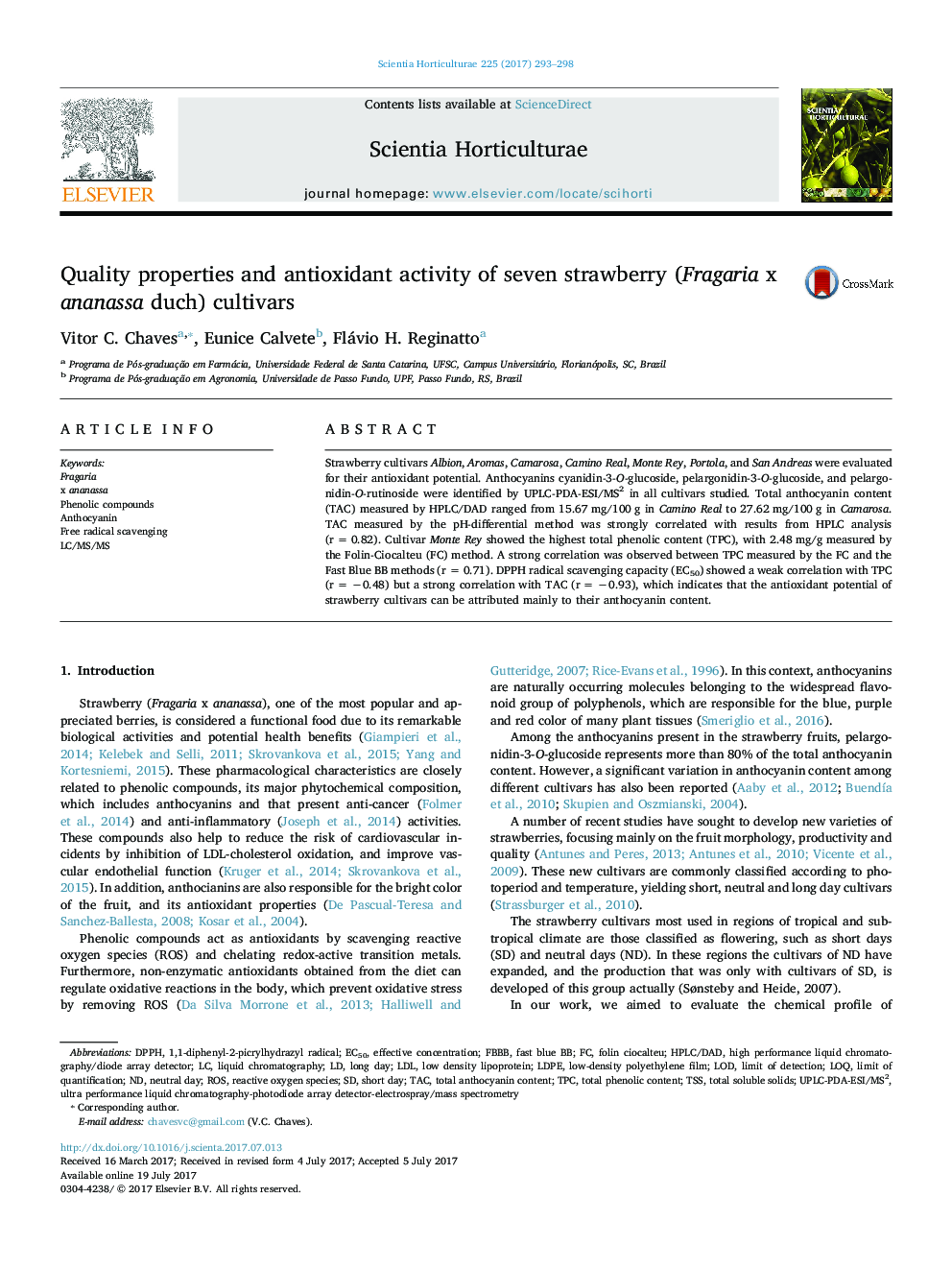| Article ID | Journal | Published Year | Pages | File Type |
|---|---|---|---|---|
| 5769269 | Scientia Horticulturae | 2017 | 6 Pages |
â¢Monte Rey had the highest phenolic content irrespective of analytical method employed.â¢Camarosa had the highest anthocyanin content irrespective of analytical method employed.â¢Antioxidant capacity was weakly correlated with phenolic content.â¢Antioxidant capacity was strongly correlated with anthocyanin content.â¢Cyanidin and pelargonidin hexosides were the predominant anthocyanins.
Strawberry cultivars Albion, Aromas, Camarosa, Camino Real, Monte Rey, Portola, and San Andreas were evaluated for their antioxidant potential. Anthocyanins cyanidin-3-O-glucoside, pelargonidin-3-O-glucoside, and pelargonidin-O-rutinoside were identified by UPLC-PDA-ESI/MS2 in all cultivars studied. Total anthocyanin content (TAC) measured by HPLC/DAD ranged from 15.67 mg/100 g in Camino Real to 27.62 mg/100 g in Camarosa. TAC measured by the pH-differential method was strongly correlated with results from HPLC analysis (r = 0.82). Cultivar Monte Rey showed the highest total phenolic content (TPC), with 2.48 mg/g measured by the Folin-Ciocalteu (FC) method. A strong correlation was observed between TPC measured by the FC and the Fast Blue BB methods (r = 0.71). DPPH radical scavenging capacity (EC50) showed a weak correlation with TPC (r = â0.48) but a strong correlation with TAC (r = â0.93), which indicates that the antioxidant potential of strawberry cultivars can be attributed mainly to their anthocyanin content.
